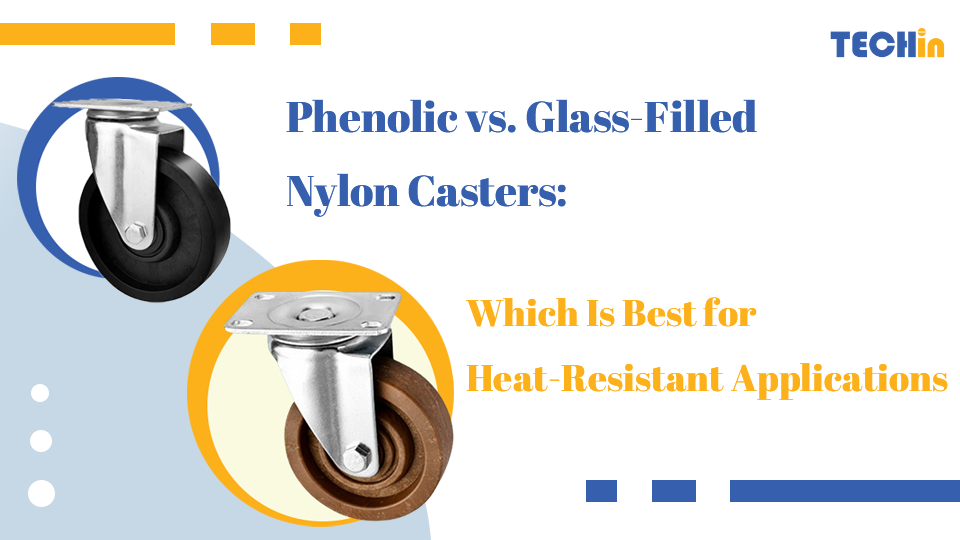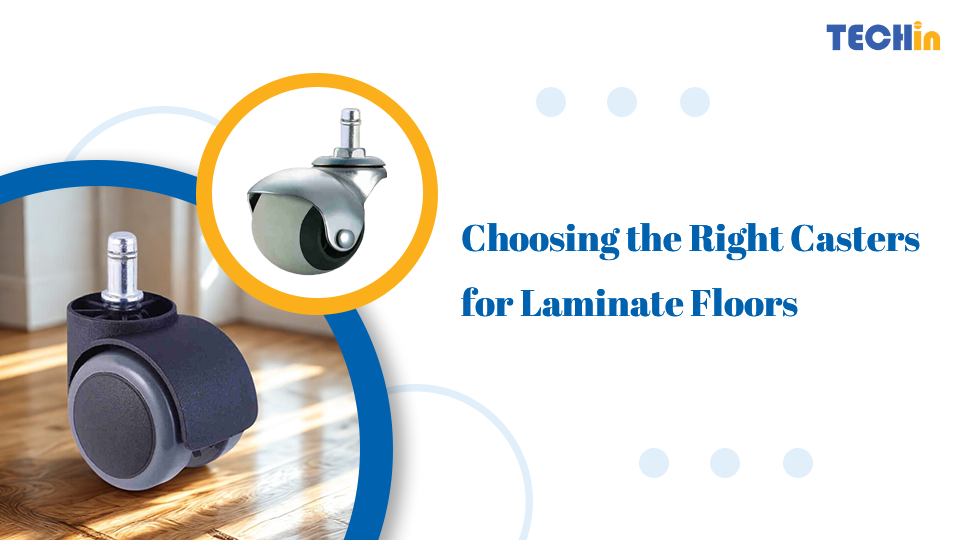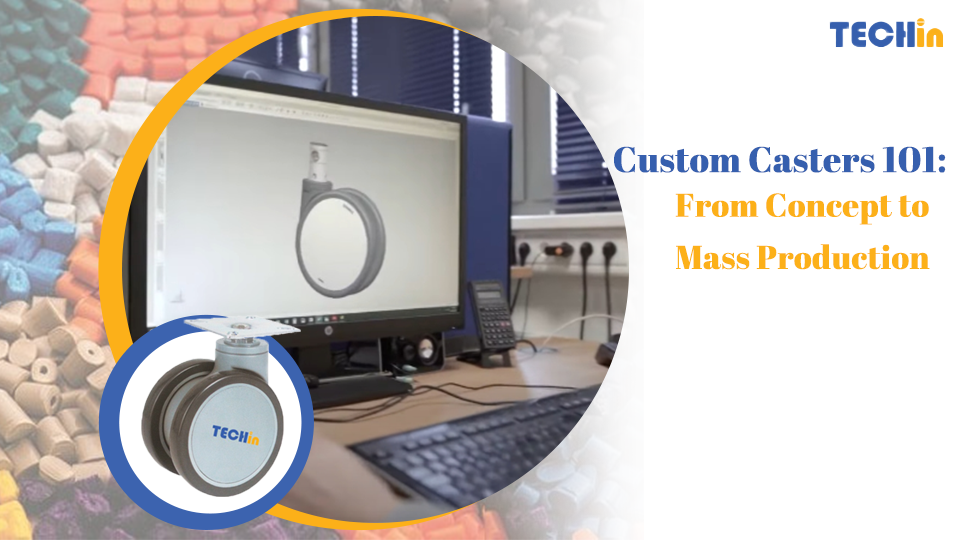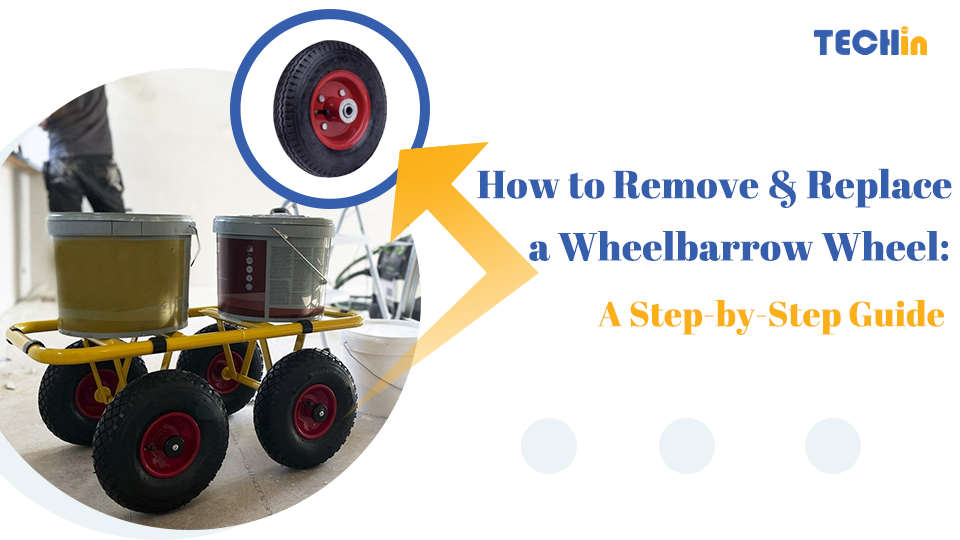Introduction
Working in high-heat environments means your casters are under constant stress. An wrong choice can lead to premature wheel failure, operational downtime, and significant replacement costs. This guide provides a technical comparison of phenolic and glass-filled nylon casters to help you make an informed decision.
Phenolic casters are your go-to for extreme dry heat, handling up to 232°C (450°F), but they can’t handle moisture. Glass-filled nylon casters top out at 177°C (350°F) but are built to resist water, steam, and chemicals, plus they take a hit better. For dry heat, pick phenolic. For anything wet or chemical-heavy, glass-filled nylon is the clear winner.
To make an optimal decision, it’s essential to understand how each material performs under specific conditions of heat, moisture, and load. Let’s examine both options in detail.
Understanding Glass-Filled Nylon Casters
Glass-filled nylon casters are an advanced composite material where nylon is reinforced with glass fibers, significantly enhancing its mechanical strength and thermal stability. Their primary advantages include:
- Moisture and Chemical Resistance – They are ideal for environments requiring steam cleaning, frequent washdowns, or exposure to oils, greases, and various cleaning agents.
- Superior Impact Resistance – This material absorbs shock and impact more effectively than phenolic, reducing the risk of fracture from drops or rough floor conditions.
- Non-Marking Floor Protection – They leave no marks or scuffs, a critical benefit for food processing, pharmaceutical, and laboratory facilities.
- Reliable Temperature Tolerance – They perform consistently in temperatures up to 177°C (350°F).
Primary applications include: food processing plants, pharmaceutical labs, industrial kitchens, and chemical facilities where heat is combined with moisture or aggressive cleaning protocols.
Understanding Phenolic Casters
Phenolic casters are manufactured from cotton canvas or other fibers impregnated with phenolic resin, which is then compression-molded under high pressure and heat to form a hard, dense wheel. Their key strengths are:
- Higher Heat Tolerance – They can operate continuously in temperatures up to 232°C (450°F), making them highly suitable for extreme dry heat applications.
- High Load Capacity – Phenolic wheels excel at supporting heavy static loads, such as industrial machinery or product racks in curing ovens.
- Cost-Effectiveness – From a cost perspective, they are often a more economical option than glass-filled nylon.
- Floor Protection – They are non-marking and non-conductive, which is valuable in sensitive manufacturing environments.
Key limitations, however, must be considered: This material absorbs moisture, which can lead to swelling and cracking in wet or humid conditions. Its brittle nature also makes it less suitable for applications involving rough handling or shock loads.
Side-by-Side Comparison: Phenolic vs. Glass-Filled Nylon Casters
This table provides a clear breakdown of their respective strengths and weaknesses to guide your selection.
| Property | Phenolic Casters | Glass-Filled Nylon Casters |
|---|---|---|
| Max Temperature | 232°C (450°F) | 177°C (350°F) |
| Moisture Resistance | Poor (absorbs water) | Excellent |
| Chemical Resistance | Moderate | High |
| Impact Resistance | Brittle under shock loads | Excellent |
| Load Capacity | Very high | High (slightly lower) |
| Cost | Lower | Slightly higher |
| Best Environment | Dry, high-heat applications | Wet, humid, or chemical-heavy |
The key takeaway is clear: Phenolic excels in extreme dry heat, while glass-filled nylon is the superior choice wherever moisture, humidity, or chemicals are present.
A Closer Look at Temperature Ratings
- Phenolic casters: Typically operate within a range of -46°C to 232°C (-50°F to 450°F). They are well-suited for bakery ovens, autoclaves, and dry curing processes.
- Glass-filled nylon casters: Perform optimally in a range of -40°C to 177°C (-40°F to 350°F). They are the better choice in environments with steam, water, or caustic cleaning agents.
An important note: Manufacturers’ ratings can vary. Always verify the technical datasheets for your specific product before purchasing.
Are Phenolic Caster Wheels Better for Dry Heat?
Yes. For applications involving exclusively dry heat, phenolic casters are the superior option due to their ability to withstand higher maximum temperatures without deformation.
However, this advantage is contingent on the absence of moisture. Exposure to condensation or cleaning processes compromises their structural integrity, making them unsuitable for any application that is not consistently dry.
Which Casters Are Best for Industrial Ovens?
The selection for industrial ovens hinges on one critical factor: the presence of moisture.
- For dry heat ovens: Phenolic casters are the recommended choice due to their higher temperature rating and cost efficiency.
- For ovens with moisture exposure (e.g., steam-cleaned): Glass-filled nylon casters are the necessary choice, as they will not absorb water or degrade in humid conditions.
How Do I Choose the Right High Temperature Caster?
Use this framework to align material properties with your specific operational requirements.
| Selection Factor | Best Choice | Reason |
|---|---|---|
| Operating Temperature | Phenolic (up to 232°C / 450°F) | Handles higher peak temperatures without softening. |
| Moisture / Steam Exposure | Glass-Filled Nylon (up to 177°C / 350°F) | Does not absorb water; ideal for wet or steam-cleaned areas. |
| Chemical Resistance | Glass-Filled Nylon | Withstands oils, greases, and cleaning agents more effectively. |
| Impact / Shock Loads | Glass-Filled Nylon | More impact-resistant and less brittle under rough handling. |
| Heavy Static Loads | Phenolic | Supports very heavy equipment in stable, dry settings. |
| Budget Constraints | Phenolic | Generally offers a lower upfront cost. |
| Long-Term Durability | Glass-Filled Nylon | Performs better over time in humid or chemically aggressive environments. |
A simple guideline for your decision:
- For dry, extreme heat → Select Phenolic.
- For humid, chemical-rich, or steam-cleaned environments → Select Glass-Filled Nylon.
Summary
In summary, both phenolic and glass-filled nylon are high-performance materials, but they are engineered for different conditions. Phenolic is for dry heat, period. Glass-filled nylon is for heat combined with moisture or chemicals. Getting this right isn’t just about buying a caster; it’s about preventing failure and keeping your work moving.









